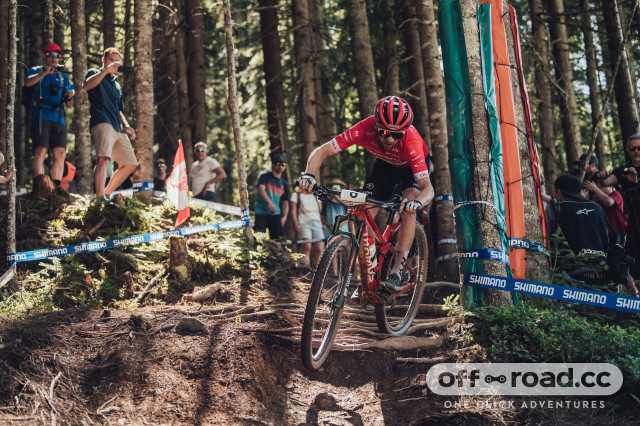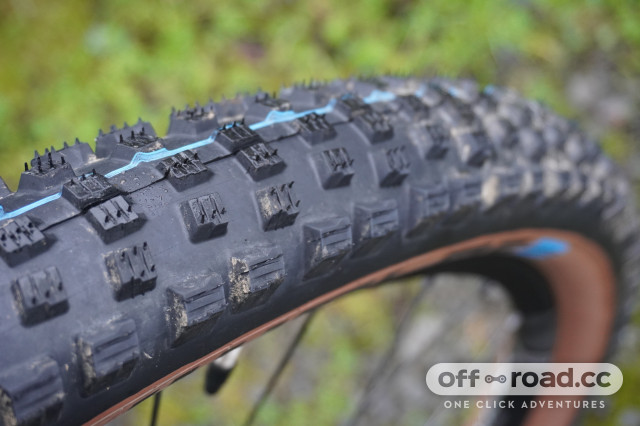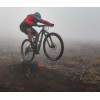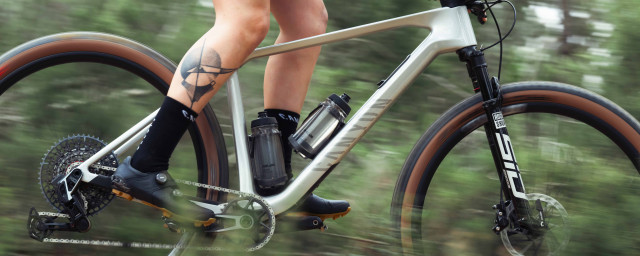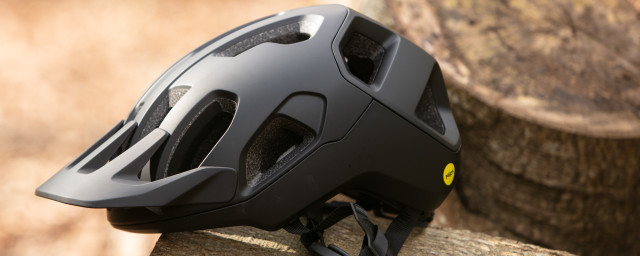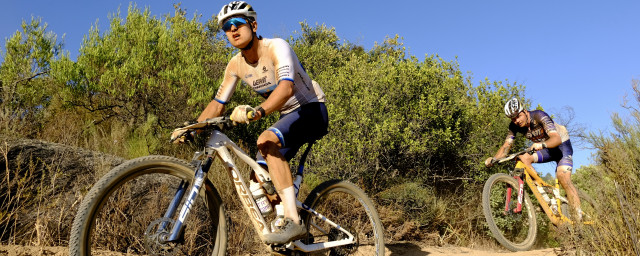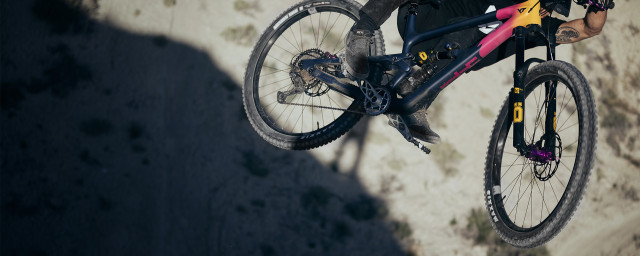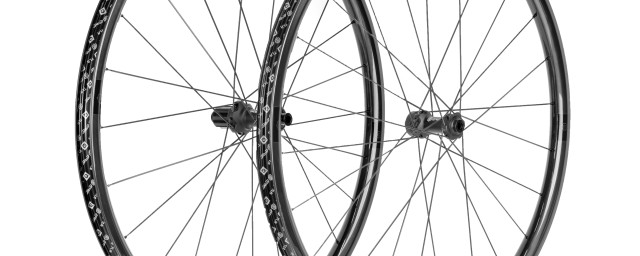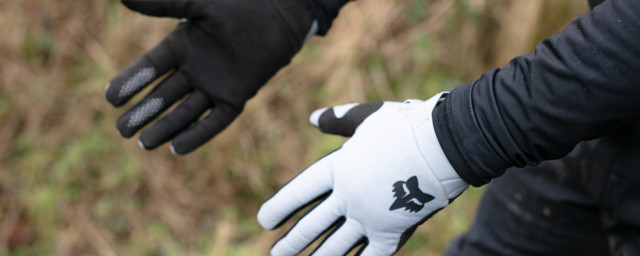Cross-country mountain biking: everything you need to know
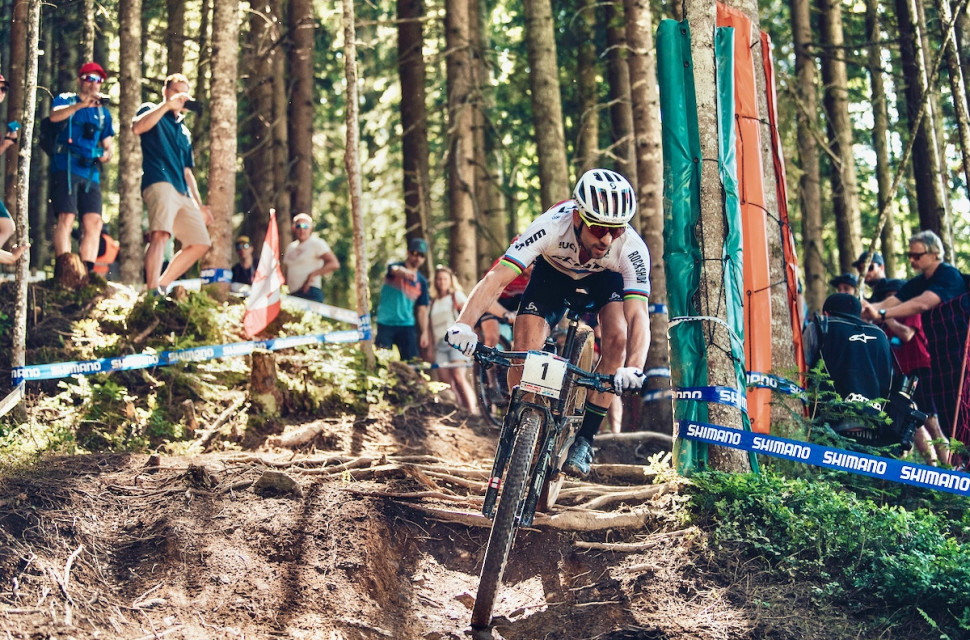
Mountain biking as a sport is multifaceted and one of the most popular categories is cross-country. When you embark on an off-road ride in the countryside or link some mild forest singletrack trails, you are riding cross-country. Pretty self-explanatory, really - but like all things mountain biking, cross-country riding is layered and niched. The bikes and gear are biased towards the lighter side of things, rolling efficiency and aerodynamics. Riding distances can be extensive or short, but there's always a latent element of intensity, whether it's a steep high-cadence climb or a potential 80-mile off-road ride.
Cross-country mountain biking divides into two racing disciplines, which shape product development and diversity: endurance riding (XCM) and short-course multi-lap racing (XCO). To achieve the highest honour in competitive mountain biking - an Olympic gold medal - riders compete in XCO cross-country racing, where a short-but-technical course is raced for five to seven laps, depending on the actual track distance.
An exciting and exhausting riding format, cross-country mountain biking combines short but brutal uphill sprints and generally smooth descents, with some significant technical features, like jumps and drop-offs. Although most cross-country mountain bikers don’t race XCO, due to its injury risk and intensity, much of the product development for cross-country bikes and components have come by way of XCO requirements.
The other side of cross-country mountain biking is marathon or XCM. Although some areas are limited in their ranging terrain and public access, to achieve 80-mile mountain bike rides, there is a growing global series of XCM stage races, modelled on the famous Cape Epic. These races allow amateur riders (colloquially known as ‘weekend warriors’), to compete on the same terrain, distance, and format as pros.
Cross-country mountain biking: bike and suspension
Mountain bikes are easily categorised by their suspension travel and geometry numbers. Cross-country mountain bikes occupy a spectrum between 80-120mm of fork or rear-suspension travel, with handlebar lock-out switches being a popular feature.
Although cross-country mountain bikes have comparatively little suspension platform, the fork and shock options have improved dramatically over the last four years. Gone are the days of spindly fork stanchions that would flex when rolling through rock gardens. Or suspension components with such limited internals, they would provide negligible adjustability.
A cross-ciuntry mountain bike racing has become more technical, with courses featuring more demanding jumps, drop-offs and rocks gardens, suspension designers have responded. In cross-country mountain biking, there is an obsession with lightweight, but designers have been mindful of engineering forks with enduro stanchion diameters at a reasonable weight. The latest Fox 34 Step-Cast and RockShox SIDs are good examples of this.
The RockShox SID has always been an ultralight fork, but riders can now fit SIDs with 35mm stanchions instead of 32mm. And those stanchions are the same diameter as RockShox’s Pike series enduro forks, albeit much shorter in travel.
Mirroring the advancement in suspension design is an evolution of cross-country frame geometry. For decades, cross-country mountain bikes shadowed road bike geometry principles: short frames with steep head angles. The wisdom was that a steep head angle (around 70-degrees) was essential to place any rider in the best possible position when pedalling up steep inclines, as body weight shifted aft, with each degree of inclination on a climb.
Experimentation and progression proved that a slightly slacker head angle, combined with longer frames and more generous reach, delivers better overall cross-country riding geometry. Modern cross-country mountain bikes have seen head angles slacken to 67-68-degrees, with extended reach numbers. The result is better centring of the rider, which delivers all the climbing traction and balance, with enhanced confidence on descents.
There is no discussing cross-country bikes without mention of ‘downcountry’. A colloquialism sourced from the mountain bike media, ‘downcountry’ bikes denote the most progressive geometry 120mm cross-country frames. So what is downcountry? Well, these bikes feature head angle slacker than 67-degrees, and longer reach numbers, than would be the norm for cross-country bikes.
Although ‘downcountry’ mountain bikes remain adept climbers, they are also very competent descending machines, thanks to their progressive geometry numbers. Why would you want a cross-country bike, featuring 120mm of fork and rear-suspension travel, and a very slack head angle? Isn’t that just incentivising you to ride trails with oversized features, blowing the suspension through its travel? Not quite.
The ‘downcountry’ bike’s primary appeal is providing more trail feedback and allowing for greater rider input, regarding cornering lean and body position, when descending singletrack trails. It’s a more ‘fun’ version of the conventional 120mm cross-country bike.
Cross-country mountain biking: tyres
Lightweight casings with low-resistance tread patterns are a priority for both XCM and XCO mountain bike wheels and form part of the best mountain bike tyres. Cross-country riders want to roll the least amount of rotation tyre weight, with anything in 600-780g range being preferable. You’ll never see a cross-country rider with a 1,000g+ tyre.
The sacrifice is puncture resistance, with lightweight cross-country tyres more susceptible to pinch flats and sidewall tears. Cross-country tread patterns mostly feature small tread blocks, in tight groupings, which reduce rolling resistance.
Although the preference for lightweight casings and minimalist tread patterns hasn’t changed much over the years, cross-country tyres have grown in size. Standard cross-country tyres measured 29x2.0in in 2010 but are now upwards of 29x2.4in.
These new ‘trail wide’ 2.4in width cross-country tyres directly influenced professional XCO racers, who desired a touch more grip and traction when descending technical World Cup race courses.
Cross-country mountain biking: riding gear
Most mountain bikers might dress in baggies and loose-fitting trail shirts, but cross-country riders look more akin to road cyclists. Tight lycra jerseys and bib shorts are a given for lightweight and aerodynamic reasons.
For cross-country riders who will be rolling XCM mileages, all the possible aerodynamic gains compound over a 50-80-mile day. It’s the reason why you’ll rarely see cross-country riders wearing trail-type mountain bike helmets, featuring a visor peak.
The efficiency principle applies to shoes, too. Cross-country riders rarely hike-a-bike and therefore have no requirement for striding comfort, off the bike. Power transfer and efficiency are the higher principles, and hence carbon soles and slim material uppers are preferred by cross-country riders.
Cross-country mountain biking: trails
Cross-country mountain biking can be anywhere, riding anything, off-road. You could link a matrix of rural dirt roads, for a 50-mile ride. Flow through buffed forest singletrack, or conquer a hilly area, testing your gradient climbing ability on fire roads.
Traditional cross-country mountain biking trails don’t feature big jumps or drops, unless you are on a dedicated XCO-grade track, where the technicality can be intimidating.
In general, cross-country trails rarely go beyond the red grading for descents, unless they are World Cup or national series XCO race venues.
Cross-country mountain biking: racing
As we alluded to in the beginning, you get endurance (XCM) and sprint cross-country racing (XCO). The endurance events can be a huge 80-mile day out on the bike, or a stage race, varying between three and eight days.
Endurance cross-country riders prioritise efficiency and might ride bikes with 2.25in wide tyres and the least prominent tread pattern to benefit from lower rotational weight and rolling resistance. XCM mountain bikes can also hold up to three of the best water bottles for cycling - the third one is often mounted on the seat tube. Marathon riders also tend to run longer stems for better ergonomics and comfort over longer distances.
XCO racing is all about lactic acid management and VO2 max thresholds. It’s between one and two hours, with riders lapping a compact course consisting of short climbs and descents. XCO racing mountain bikes feature gripper tyres and the dropper seatpost has become a must-have for confidently rolling and launching those technical trail features.
A similarity between XCM and XCO terrain is that severe rock gardens rarely feature, outside of perhaps 10-20 feet of purposely stacked rocks, on World Cup-level XCO tracks.

